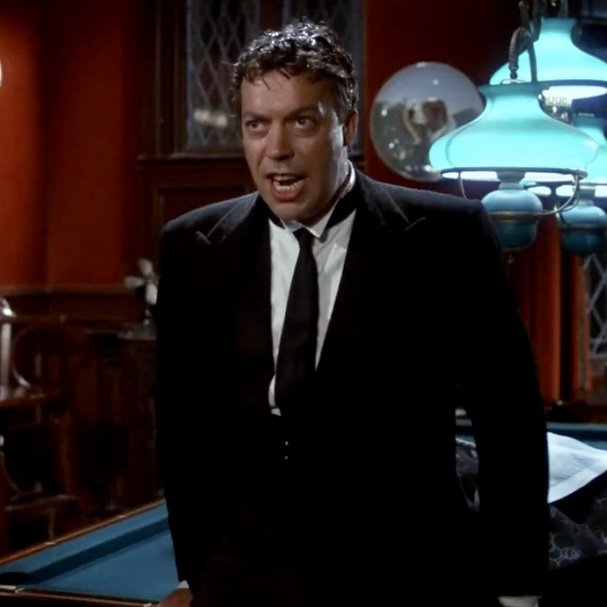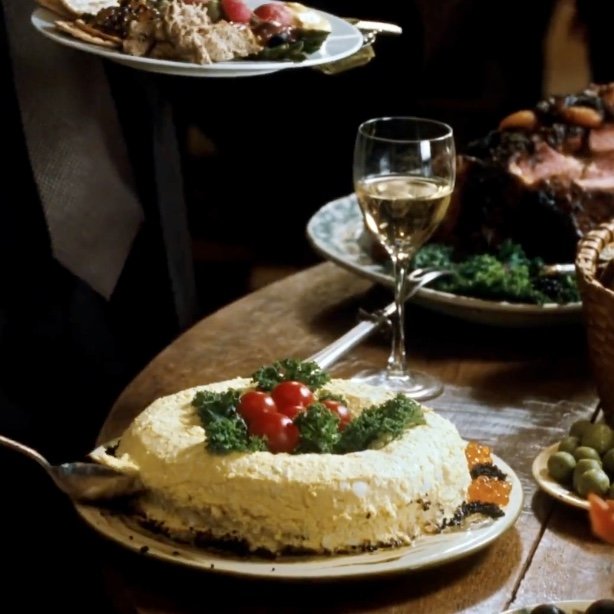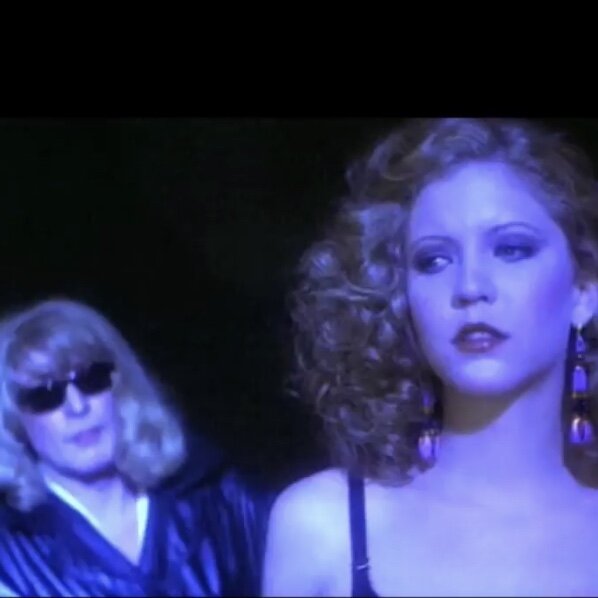Life After Death: The Cult Classic That is Clue
It boggles the mind to think that the 1985 comedic murder mystery, Clue flatlined upon its initial theatrical release. Opening on December 13, 1985, the film, co-conceived by John Landis, and based on the classic Parker Brothers’ board game, was up against The Jewel of the Nile, the sequel to the successful adventure-comedy, Romancing the Stone, with Rocky IV and Landis’ Spies Like Us also continuing to do well commercially. One thing I don’t understand (one thing?): Why Clue didn’t get an October or Halloween-season release-date, considering its murder-mystery genre.
However, with the help of cable television, and the birth of the VHS rental market, Clue was brought back to life by viewers, in their living rooms, with the remote control. From John Morris’ Hitchcockian, Bernard Herrmann-inspired orchestral score during its opening credits, to the solid cast of “colorful” characters that the viewer meets one by one as each arrives at a spooky manor on a dark and stormy night, Clue is “cozy murder” at its best.
The screenplay’s mid-1950’s timeframe allowed the director and screenwriter, Jonathan Lynn, to weave in satirical jabs at McCarthyism, conservative moral codes, even good ol’ fashioned capitalism. But mostly, Clue works because of the sharp lines of dialogue, quickly delivered between characters. Tim Curry’s Wadsworth, the Butler, not only tidies up the kitchen and the dining room, but takes it upon himself (as a workingman’s Hercule Poirot) to neatly wrap up the mystery via a zany, fast-paced, cartoon-caliber reenactment of the evening’s events, where the viewer discovers the whodunit and two other who(could’ve)dunits.
Repeated airings and rentals in the ‘80s and ‘90s, and purchases, of Clue have earned the film a large fan base, to the point where it’s easily reached cult-classic status. In particular, Madeline Kahn’s improvised “flames” monologue is a fan favorite, and probably the movie’s most recited section.
Long story short (too late): Clue certainly proves that just because something doesn’t break box-office records doesn’t mean it’s destined for the bargain bin and into obscurity; with a strong ensemble cast, a witty script full of memorable lines, and the support of a deeply loyal following, a film such as Clue can take on a life (after death) of its own.
Bundle Up: Four Films for Fall
For many of us, skies are still blue and temps are still warm. So it may be hard to get into fall-season feels. But before you know it, nature’s A/C will kick in, and we’ll find ourselves wanting to bundle up under a throw, and get all comfy, cozy, and ready to watch a fall-season flick. Here are four films that are the motion-picture equivalent of a great big hug, ones that make you feel warm, not like on a summer day, but in a warm and fuzzy kind of way:
Screen Time
The 1998 Nora Ephron film, You’ve Got Mail delivers fall-season vibes big time: Tom Hanks; Meg Ryan; a witty rom-com script; New York in the fall (“makes me wanna buy school supplies”); a heartwarming soundtrack; the unforgettable Parker “I’m having my eyes lasered” Posey. Back then, it was dial-up email, now it’s Wi-Fi, social media, and sliding into someone’s DMs that can create love connections. Classic cinematic themes of opposite attract, the importance of internal beauty, and a tireless faith (fate) in love make this a fall-season film essential.
“I didn’t know who you were with.”
Right from the opening credits, which glides the viewer into a beautiful apartment, drapes flapping in the cool breeze, to a buffet table of savory selections, this film is the epitome of cozy cinema.
Come on in!
And remember, “that caviar is a garnish!”
“You’re taking all the caviar?!”
Change of Heart
Nine years prior to You’ve Got Mail, there was Rob Reiner’s When Harry Met Sally… The Nora Ephron-penned screenplay gave new life to the romantic comedy, allowing the viewer to watch the relationship between a man and a woman, the former who believes men and women can’t be friends, develop into just that, and eventually something more. Like summer turning into fall, the film is all about transition: each goes through a major breakup (Harry with Helen, Sally with Joe); the passage of time, complete with changes in fashion and hairstyles; and most significantly, time, and life lessons, cultivate a slightly more mature Harry, and a slightly less persnickety Sally. No one is completely transformed, but each undergoes a change of heart, entertaining the notion of letting someone in, not just someone new, but someone drastically different.
During the scene that has Harry (Billy Crystal) and Sally (Meg Ryan) walking through the park, Sally sharing details (or lack thereof) of a longstanding sexual fantasy, the cinematographer, Barry Sonnenfeld captures the various orange hues and verdant shades of green in the trees. Just as the colors of the leaves begin to change, a natural visual indicator of autumn’s arrival, a shift begins for Harry and Sally. Sharing of a sexual fantasy is reserved for a more intimate bond, but here it’s shared in the context of a budding, once highly unlikely, friendship.
“Well sometimes I vary it a little.”
In another scene, Sally, in a warm and toasty red turtleneck, confides in Harry about why she and Joe broke up. The “I spy a family” monologue is Ephron prose at its best. Sally mentions at the start of her story how she and Joe “wanted exactly the same thing.” But by the end of the story, they reach a crossroads, their “wants” become “needs”; it’s another change of heart, but it’s the type that divides people apart, instead of drawing them together.
“And I started to cry.”
As the film reaches its climax, not of the iconic deli-scene kind, it’s no surprise that it takes place on New Year’s Eve, the ultimate time of the year that signifies transition. Ephron writes another heartfelt monologue, this time Harry expressing an epiphany: “… When you realize you want to spend the rest of your life with somebody, you want the rest of your life to start as soon as possible.” I’ll have what he’s having.
“I love that it takes you an hour and a half to order a sandwich.”
Shue In
This next movie may not immediately conjure up images of autumn, or New York in the fall, but Chris Columbus’ Adventures in Babysitting has that fall-season state of mind. The 1987 comedy is set partially in the Chicago suburbs, and Columbus once again captures crisp, upper-middle-class living, suddenly turned upside down (a theme he would continue to explore in 1990’s Home Alone and 1994’s Mrs. Doubtfire).
Elisabeth Shue stars as Chris Parker, a suburban teen turned reluctant babysitter. Chris and the trio of kids now in her care are forced to leave the sheltered confines of suburban life, and head into the big, bad city to pick up Chris’ friend, Brenda (Penelope Ann Miller), who’s stuck in a downtown bus station. En route, everything that could possibly go wrong, does, and Chris must tap into her highly underdeveloped street smarts.
Shue’s Chris Parker is the anti-Ferris, an underrated heroine of the ‘80s teen-comedy genre.
All the while, Chris tries to stay cool, and keeps warm, wearing gloves, a multicolored striped scarf, and a long brown coat that she inherited from her grandfather. A gold heart-shaped brooch rounds out the look; all are style cues indicative of Chris’ inherent maturity, and capability, well beyond her years. By film’s end, the character of Chris becomes the anti-Ferris, an underrated heroine of the ‘80s teen-comedy genre. Shue is lovable, relatable, and completely convincing in the role as the “every girl” in extraordinary circumstances.
The adventure begins.
And we can’t forget Thor-obsessed Sarah (Maia Brewton), the coolest tyke on roller skates.
“You want some orange?”
Mama Drama
Chris Columbus’ films showing the family structure in disarray still managed to have a comedic tone; Mrs. Doubtfire the prime example of this, as it tackled divorce, and what happens when a parent is replaced by someone who not only fills the void, but seemingly fills the position better. In 1998’s Stepmom, Columbus continued with the theme of divorce and parental replacement, but added more turmoil and tears.
Susan Sarandon’s Jackie Harrison is co-parenting two children with ex-husband, Luke (Ed Harris) and his new girlfriend, Isabel (Julia Roberts). Jackie and Isabel are at odds, with one of their wars of words taking place on a fall-leaf-covered battlefield, a fitting environment for Jackie to reveal her cancer diagnosis to Isabel.
“You guessed the wrong secret.”
Behind Isabel, the trees are alive and green, but cut to Jackie, and she almost blends into a background of fallen orange and yellow leaves, and somber earth tones. It’s after this exchange that their relationship softens, temporarily, and for the moment the tears dry, with death at one point even seen as comic relief. A Thanksgiving-themed school play features Jackie’s son, Ben (Liam Aiken) as a flying turkey (on wires) that is shot by prop bows and arrows, and muskets. A horrified Isabel asks Jackie: “Is he dead?” to which an unfazed Jackie replies: “Yeah, they killed him, but he does it so great!”
“Are you dying?”
The story continues through the fall, and into winter, culminating in the emotional “And you can have their future” scene, the beautiful midnight horse ride, and finally, a warmhearted Christmas morning, with Ben, a budding magician, receiving a gold cage with a white dove as a surprise gift; the dove also serving as a symbol of peace, the newest member of the Harrison family.
“Not today!”
So when that autumn chill begins to fill the air, get comfy on the couch with one, or all four, of these fall-inspired flicks. Which one will you bundle up with first?
Double Trouble: Reflections on Brian De Palma’s Dressed to Kill
Brian De Palma’s Dressed to Kill is his (graphic) homage to Alfred Hitchcock’s 1960 classic, Psycho: Here’s a list of the some of the referential elements:
De Palma’s film incorporates not one, but two shower scenes;
Its female lead, Kate Miller (Angie Dickinson is to Janet Leigh’s Marion Crane; both characters essentially good women “gone bad”) is the “Hitchcock blond”;
Instead of a shower curtain, an elevator door is the temporary barrier that separates victim from killer, safety from harm, life from death;
Nancy Allen (is to Vera Miles) and Keith Gordon (is to John Gavin) step in as crime solvers;
Allen with a “tall blond” behind her and flickering lightning is to Miles with Anthony Perkins and a swinging lightbulb;
A psychiatrist (David Margulies to Simon Oakland) summarizes personality conflict, arousal and the human psyche.
Sunglasses At Night: Liz (Nancy Allen) and the “tall blond.”
Filmways Pictures. Cinematographer: Ralf D. Bode.
Also take note of duality as a running theme: Spoilers ahead: Besides De Palma’s signature split-screen technique, his script includes a scene where Michael Caine’s Dr. Elliott is on the phone in his office, taking the time to spell out his last name: “E; double l; i; o; double t,” plus there are a number of scenes involving mirrors: Elliot becoming startled when he catches his reflection in a mirror, with another occurrence shown in the trailer below; when Allen’s character, a call girl named Liz, seduces Elliott during a therapy session, he glances down to a mirror on his desk, and smirks devilishly. The audience also learns near the end of the film that there are two “tall blonds,” one with good intentions, the other, as already previously noted.
Although De Palma is certainly influenced by the Master of Suspense, he still manages to add his own visual stamps and a dreamy score by Pino Donaggio to create an enduring film that feels anything but a carbon copy.
Get Up, Jeanie: Flashdance Scene Takes on Whole New Meaning
With all the figure skating on TV over the last two weeks, couldn’t help but think about 1983’s Flashdance. Jennifer Beals’ Alex, Pittsburgh welder by day, dancer in a bar by night, dreams of a bigger life. So too does Alex’s friend and co-worker, Jeanie, who is a figure skater by day, waitress in a bar by night. One memorable scene (of many) captures the pressure of becoming a professional athlete; the solitude of an ice skater under the spotlight; a reminder of how years of practice and sacrifice can come down to one performance. The scene features Laura Branigan’s 1982 hit, “Gloria”; it’s upbeat, yet it takes on a different tone by scene’s end. The actress, Sunny Johnson, who played Jeanie, passed away at the age of 30, a little over a year after the film’s release, which now only adds to the scene’s already devastating portrayal of potential and possibility never to be fully realized.
Pop Playlist: The Smiths: “Please, Please, Please…”
The Smiths’ “Please, Please, Please, Let Me Get What I Want” is just shy of two minutes long, but it efficiently goes straight to the heart of desperate longing. The lead singer, Morrissey sounds as if he’s in mid-prayer, a plea to experience “Good times for a change.” Acoustic guitar, and the defeated sadness in his voice, create a somber tone, yet not one of complaining, but contemplation. There’s disappointment, but he’s also hopeful; he’s the “good man” who doesn’t want to “turn bad.” The lyric, “Haven’t had a dream in a long time” may be the track’s most vulnerable, with the later “what” in “get what I want” open to interpretation, the “what” replaceable with “who.” (Morrissey has in fact applied this lyric change during live shows.)
The song works well in the heartwarming (and heartbreaking) film about the confusion of unrequited love, (500) Days of Summer, with Joseph Gordon-Levitt (Tom) and Zooey Deschanel (Summer). In the hopes of getting Summer’s attention, Tom plays the song out loud for co-worker and fellow Smiths admirer, Summer, only for Summer to walk right by his desk.
“Please, Please, Please…” has been covered by Deschanel (She & Him), and the Dream Academy, whose version appears in the film, Ferris Bueller’s Day Off.

















